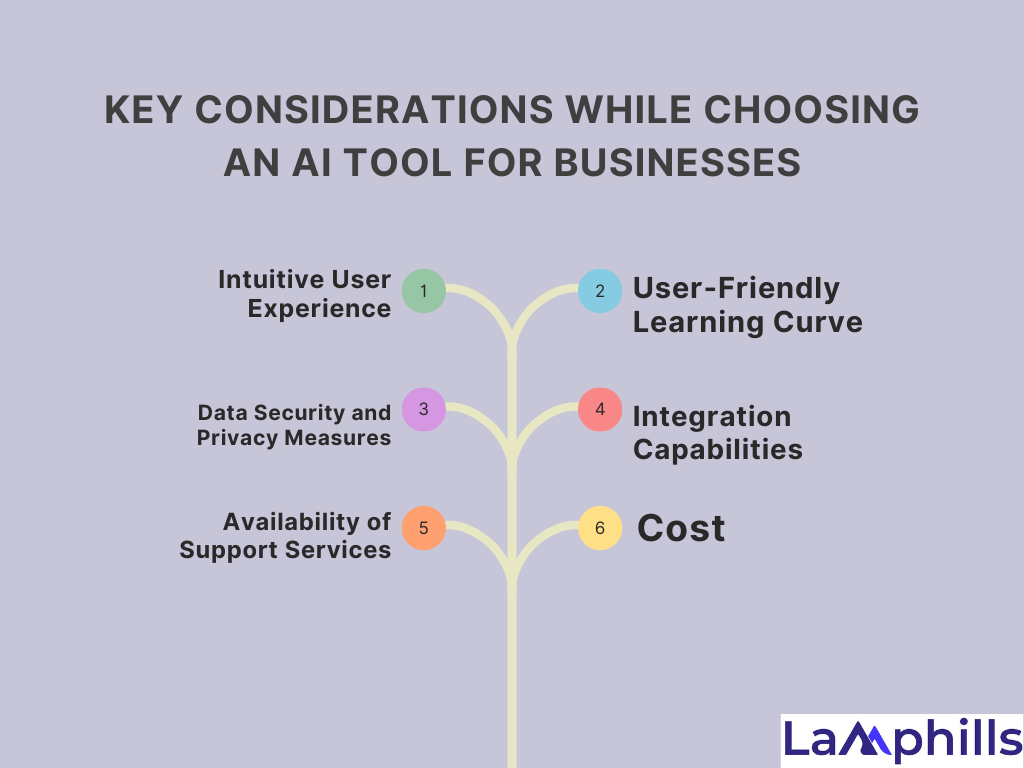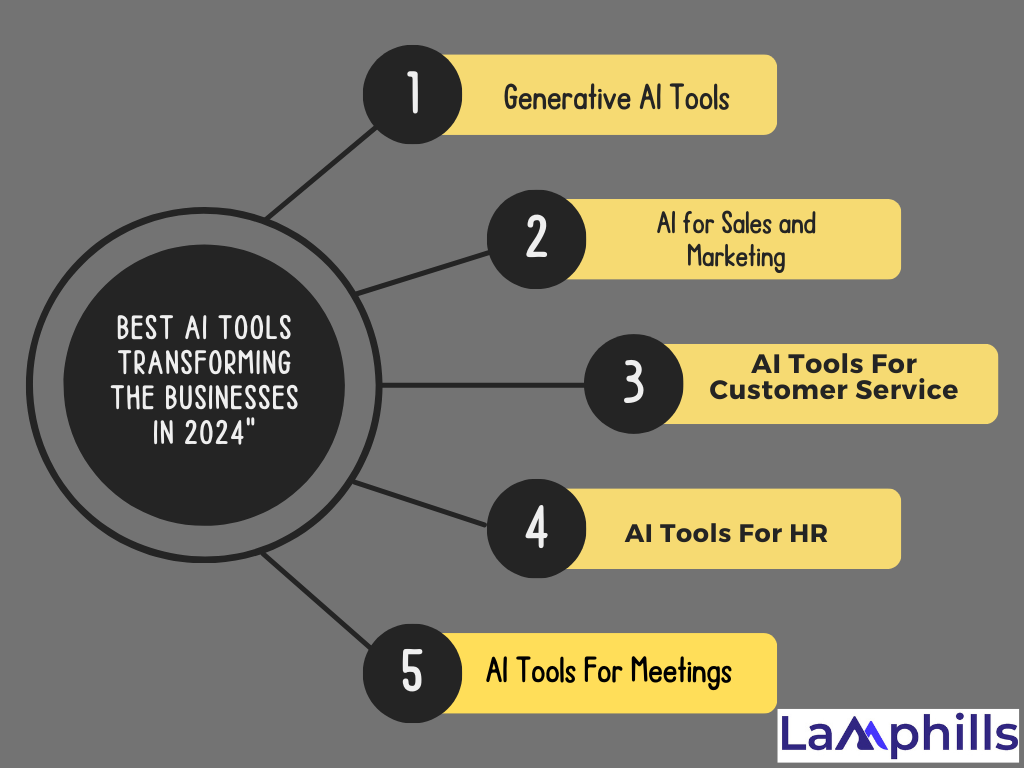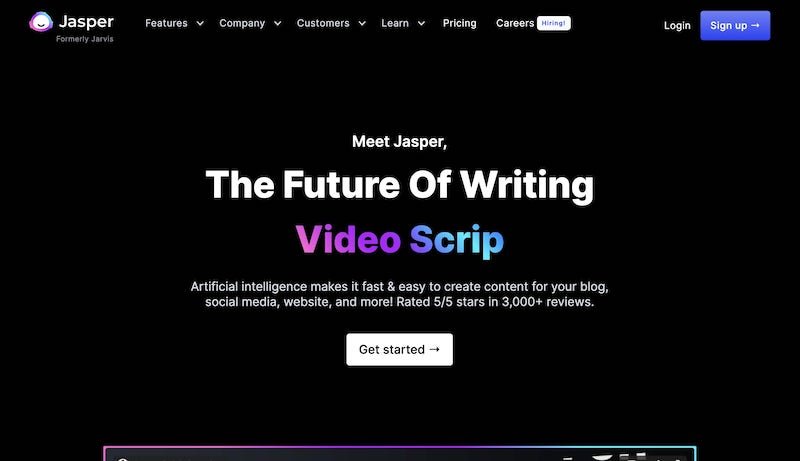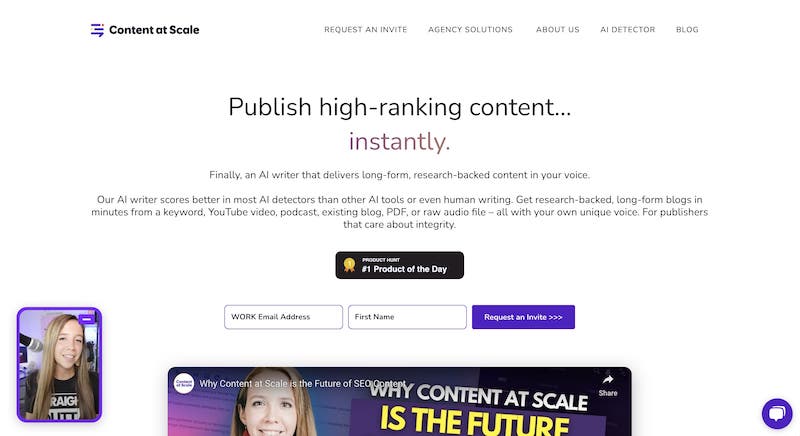When Open AI’s ChatGPT initially appeared on the scene in late 2022, I must admit that I was a little worried. I kept hearing how AI would take over my career and how human authors would go extinct. That left a bad taste in my mouth about employing AI tools for my small business. And it took some time before I attempted it myself. While I’m still not impressed with ChatGPT’s capacity to compose (or, should I say, generate) content, I’ve come to see it as a useful research tool.
Artificial intelligence (AI) has become an indispensable tool for businesses looking to stay competitive in today’s fast-paced, data-driven world. From automating repetitive tasks to uncovering valuable insights, AI is empowering companies to work smarter, make better decisions, and deliver exceptional customer experiences.
To help you navigate this exciting frontier, I’ve compiled a list of the top AI tools that are poised to have the biggest impact on businesses today. These tools span a wide range of applications, from content creation and customer service to productivity and analytics. Whether you’re a small startup or a large enterprise, these AI tools can help you unlock new efficiencies, drive revenue growth, and stay ahead of the curve.
Key Takeaways
- AI tools have revolutionized business productivity, enhancing efficiency, decision-making, and customer experience. They automate routine tasks, uncover valuable insights, and offer personalized solutions, making businesses more competitive in a data-driven world.
- Key considerations for selecting AI tools include intuitive user experience, user-friendly learning curve, data security and privacy measures, integration capabilities, availability of support services, and cost. These criteria help businesses find tools that best meet their specific needs.
- AI tools span various business functions, from generative AI for content creation (Jasper AI, Content at Scale) to sales and marketing automation (Qualifier.ai, Apollo.io), customer service enhancement (Chatbase, HubSpot), HR recruitment (Zapier, Fetcher.ai), and meeting productivity (Fireflies, Notta).
- AI tools offer numerous benefits, including cost reduction, improved decision-making, increased overall productivity, enhanced customer support, and streamlined operations. These advantages empower businesses to achieve better results with minimal effort, ultimately driving growth and success.
What Is AI?
Let me take you back to the year 2018. I worked for a mid-sized marketing agency, and our project management system was a headache. Endless email threads missed deadlines, and a perpetual sense of turmoil. Then we came upon an AI-driven project management application. It was like moving from a bicycle to a high-speed rail. Our productivity skyrocketed, deadlines were met, and stress levels decreased dramatically. That was my first encounter with the revolutionary impact of AI productivity tools, and I’ve been a believer ever since.
Moving on to 2024, the variety of AI productivity tools has grown even more. These solutions are being used by businesses of all sizes to improve communication, streamline operations, and drive growth.
In layman’s terms, AI is the study of developing computer systems capable of performing activities that would normally need human intelligence. These responsibilities include comprehending human language, finding patterns in data, problem-solving, and even adapting to new settings.
Consider AI to be the instruction manual that computers use to simulate the cognitive functions of the human brain. Following these instructions gives robots the ability to reason, observe their surroundings, and, most crucially, learn from their mistakes. AI accomplishes this by using complicated algorithms and mathematical models that computers to process information, adapt to varying circumstances, and continually improve their performance.
AI is by no means new. We’ve all been using AI without thinking about it long before we ever heard of ChatGPT. If you’ve ever asked Siri, Alexa, or Cortana for something, you’ve used AI. Remember all those times that you used Shazam to find out what song was playing? You were using AI.
What are Business AI Tools?

Business AI tools are a variety of software apps that use AI, machine learning (ML), and natural language processing (NLP) to streamline various business processes. In simple terms, these tools improve different workflows, assisting teams in completing various tasks. Businesses use AI tools to:
- Predict customer behavior
- Provide 24/7 customer support
- Deliver personalized recommendations
- Prevent fraudulent activities
- Generate high-quality content
For example, Netflix’s recommendations technology that uses AI is worth $1 billion in revenue. Many consumers like this feature, which personalizes watch suggestions based on their interests. By following this checklist below, you can systematically evaluate AI tools and select the ones that best meet your business needs, enhance productivity, and drive growth.
Key Considerations While Choosing an AI Tool For Businesses

I understand users have an overwhelming myriad of advanced AI tools in the market. But not necessarily you will use all the features listed out. Some exciting features will add more value to your business. When choosing the right AI productivity tools for your business, consider the following criteria:
#1. Intuitive User Experience
Advanced AI techniques provide significant challenges to the user experience. Yes, it has a significant impact on UX design, individualized messaging, tailored responses, and so on. AI search provides users with a very interactive experience. Wait, it doesn’t stop there; organizations discover that this user experience keeps them engaged with the tool, reducing churn and increasing usage. Navigation on the AI platform is simple and easy because of its intuitive user interface. Users may easily identify the tools they require and apply them quickly for the best outcomes.
#2. User-Friendly Learning Curve
The ideal AI solution for your organization should have a simple and pleasurable learning experience. The learning curve of your AI tool is important. , as this contributes to how well you can maximize its unique product offerings for your business.
#3. Data Security and Privacy Measures
Another essential consideration when looking for the best free AI tools is the data security and privacy safeguards in place to protect users. It’s no secret that some AI systems collect and use user data without their permission. As a result, you should avoid using such platforms, which can jeopardize your customers’ privacy and data. The finest AI tools respect their users and have safeguards in place to prevent hackers from infiltrating the platform.
#4: Integration Capabilities
As a business owner, you must work with a variety of platforms to ensure that you are providing maximum service to your customers. In today’s corporate world, adopting an AI technology that lacks integration capabilities with key CRM systems, be quite stressful. That would mean using multiple AI tools, which adds significant time to the process of training your team on their usage and leads to duplication of efforts. Therefore, look for AI tools with integration capabilities with major software for documentation, meetings, and scheduling.
#5. Availability of Support Services
Can you contact a customer service person and receive a response within the specified time frame? This is a key point to consider when selecting an AI tool for your organization. It’s unavoidable that you’ll get stuck when using the tool or seek an explanation on some aspects. As a result, you must be able to contact support services and receive timely responses that address your concerns. This dependability will improve your overall pleasure with the tools, which will be reflected in your interactions with prospective and existing customers.
#6. Cost
Invest in a tool or a set of tools that fits your budget. A range of AI tools is available, from free options that offer limited features to those that provide advanced functions with a high price tag. Create a budget and choose a tool that fits the bill. Most tools offer free trials, giving you an idea before investing. Take them, but do not jump ahead and invest!
Best AI Tools Transforming the Businesses in 2024

The business world is growing more competitive, and business owners require that extra boost to stay ahead of the curve. Modern customers have higher expectations, which are more difficult to achieve; they seek personalized experiences, meaningful relationships, and speedier reaction times.
That is where artificial intelligence comes in.
With the emergence of artificial intelligence, we’ve discovered new ways to promote products and services with minimal work and maximum impact. AI enables business owners to make faster, more informed decisions in less time. However, with so many AI solutions on the market today, it’s difficult to determine which ones would best fit your specific business objectives and increase productivity.
To help you, I’ve been playing around with AI tools for a while now, and I’ve continued to update this list with lots of research and testing from me and the team at Lamphils. Let’s explore some of the best AI productivity tools available in 2024 across different categories:
#1. Generative AI Tools
Generative AI generates text, images, video, audio, and computer code using natural language instructions provided by users. These AI tools can be utilized for a wide range of applications in virtually any department, business kind, or size. Everyone from lawyers, developers, and actuaries to market analysts, sales representatives, and human resource experts will use some type of generative AI in their daily work. The best generating tools are:
A. Jasper AI 
Jasper AI serves as an AI-powered writing assistant, facilitating the swift and effortless creation of top-notch content. It harnesses an array of AI models to generate text, perform language translations, produce creative content, and offer informative responses to your questions. This potent tool finds utility across a range of purposes, including:
- Crafting engaging blog posts and articles.
- Formulating compelling marketing content.
- Conducting language translations.
- Addressing customer inquiries effectively.
- Generating diverse creative content, spanning poetry, code, scripts, musical compositions, emails, letters, and more.
While Jasper AI remains in the developmental phase, businesses of all sizes have already employed it to enhance their content marketing efforts, streamline customer service, and more. If you seek a means to enhance your content creation endeavors, Jasper AI emerges as a compelling choice. It combines user-friendliness with affordability, offering the potential to elevate your content quality, engage your audience, and contribute to your business objectives.
B. Content at Scale 
Content at Scale is a platform I’ve been experimenting with for the past few months and I have to say, I’m pretty impressed. Out of all the AI writing tools that I’ve used, this is one of the few that passes AI detectors. Any time I generate an article with this tool, and run it through an AI detector, it usually comes out at least 70% human-written — which is quite impressive.
The platform is still very young, and the user interface can be a little buggy. However, the stuff it generates is among the best I’ve seen for AI content development. It is not as flexible as Surfer in terms of labeling H2 and H3 headings in your articles, but the information it produces is of greater quality than Surfer and even Jasper. If you want to create SEO blog entries, I recommend trying out this application. Of course, you always want a genuine person to examine the final document.
#2. AI for Sales and Marketing
AI can help sales and marketing spend less time on slow and mundane tasks and instead reveal valuable customer insights to drive more valuable interactions with customers. For example,
A. Qualifier.ai
Identifying the correct leads can feel like locating a needle in a haystack, but a tool like Qualifier.ai is like utilizing a very sensitive metal detector. Qualifier.ai handles the work for you, saving you time searching for the proper prospects, tracking down their contact information, and manually sending dozens of emails.
The platform is fairly easy from the user’s standpoint. Sales reps give Qualifier.ai the target industry, title, geographical area, and company size (by headcount) that you’re looking for, and Qualifier.ai locates prospects and their contact information, sending an email to them automatically. Even if a prospect does not respond, the solution will automatically follow up.
B. Apollo.io
Apollo.io is a data intelligence and sales interaction platform that assists businesses in identifying and engaging clients, shortening the sales cycle, and enriching existing contacts. Not all aspects of the solution are AI-powered. For example, one of the most significant advantages of Apollo.io is its ability to augment organizations’ CRM with contact data from over 275 million verified contacts from 30 million firms worldwide.
Also, Apollo.io can transcribe, analyze, and extract key insights from your recorded sales calls to ensure the best results. For example, it can generate a list of next steps, objections, pain points, and action items raised during a call. It can also be applied to assess and improve your sales team’s performance during customer interactions (like if you spend too much time presenting slides), so managers can be effective coaches.
Apollo.io uses AI to automatically generate and send email messages to prospects. The platform can create templates for outreach, follow-up, and last-pitch emails, and uses AI to personalize emails based on the target. You can even use the insights from the AI conversation tool to generate and send personalized follow-up emails to prospects, to keep things moving.
#3. AI Tools For Customer Service
AI is a natural fit for customer service. It can be trained and deployed quickly, so you don’t have to invest a lot of time and money just to get someone up to speed. It will be available 24/7/365, and won’t leave for another job in three months. Although, we shouldn’t expect AI to fully replace contact centers, especially in the short term. However, these platforms are making their presence known and are proving to be a vital component in many contact centers. E.g,
A. Chatbase: Conversational AI for Seamless Customer Service
Chatbase is a conversational AI platform that enables businesses to create intelligent chatbots and virtual assistants that can handle a wide range of customer inquiries and support requests. With Chatbase, businesses can provide 24/7 customer service at scale, while freeing up human agents to focus on more complex and high-value interactions.
Key features:
- Natural language understanding (NLU) for accurate intent recognition
- Integration with popular messaging platforms and CRM systems
- Detailed analytics and performance tracking
Pricing: Chatbase offers a free plan for up to 20 message credits, with paid plans starting at $19/month for additional features and usage.
B. HubSpot
HubSpot is a CRM platform that can streamline your sales, marketing, and customer care activities. The platform uses AI to help you optimize everything from inbound marketing efforts to corporate management.
HubSpot’s CRM is completely free. Paid options begin at $50 per month and vary depending on the team size and subscription tier. Core AI features include content generation, deduplication for your lists, emails, and workflows, as well as HubSpot’s AI-powered companion, ChatSpot. HubSpot truly believes that it is an all-in-one platform for marketing, sales, and customer service. It is difficult to find another solution that provides the same resources for organizations of all sizes.
What I Like
I like the email and workflow automation. One example of this in action starts with a customer filling out a support form on your website. You could build a workflow sequence in HubSpot for this scenario.
It could be something as simple as your customer getting a canned email to say you’ve received the form and you’re on it. When you create workflow automation, it will happen each time a customer fills out a support form without needing manual intervention.
#4. AI Tools For HR
AI is helping HR professionals in three major ways: it’s automating tedious tasks, unlocking insights into the employee-employer relationship, and simplifying recruiting.
A. . Zapier
Zapier is the Lego of tech stack and process integration. Using it you can build connections and marketing automation between thousands of different systems, saving time, promoting efficiency, reducing repetitive tasks, and making cost savings. You build customized workflows to link actions in one system to automated processes in one or more others. The salient data is pulled from the right place each time.
These automations can be written without coding, and there are templates to speed things up. Zapier calls its automation zaps, and it features over 3,000 integrations at the time of writing. You can even create branching workflows, depending on the logical criteria you set.
The AI is at work behind the scenes interpreting signals that trigger processes with a speed and efficiency no human team could master. Clients rave about the time savings these zaps create. There’s excellent support too, including a blog, webinars, online no-code community, and Zapier University for training.
B. Fetcher.ai
Fetcher.ai uses artificial intelligence (AI) to automate tiresome recruiting procedures. Instead of searching LinkedIn and other talent databases, recruiters tell Fletcher what they’re looking for, and it generates a list of candidates. Fletcher.ai can also automatically generate and send targeted emails to qualified applicants, and recruiters may specify when and how long the campaign should run.
Fetcher also helps recruiters assess engagement, analyze recruiter performance in your HR department, and find areas for improvement. It can also show how many candidates opened and clicked on emails, allowing you to know which candidates are interested. Fetcher may also visualize gender and demographic statistics throughout your candidate pool to guarantee you’re following DEI guidelines.
#5. AI Tools For Meetings
Sometimes meeting participants get distracted and miss something important. Other times, meetings are so fast-paced and engaging, which makes it difficult (or impossible) to take notes. And yet other times, participants aren’t able to make it to a meeting. With AI meeting tools, you don’t have to worry about information falling through the cracks.
A. Fireflies
Productivity tools are crucial for firms that want to work smarter, not harder. You can use AI to optimize your meetings and create efficient teams for your organization. Fireflies is an intelligent AI meeting helper that has transformed the art of taking notes. This application uses a combination of machine learning and natural language processing to seamlessly transcribe, summarize, and evaluate meetings.
This implies that Fireflies AI will automatically convert your meeting to text format by producing information-rich summaries and insights, considerably reducing your workload. This AI tool is compatible with Zoom and Google Meet. As a result, you can use Fireflies during online meetings to capture vital information that would otherwise go unnoticed.
B. Notta
Notta is an AI meeting assistant that improves productivity by recording, transcribing, and summarizing your in-person and virtual meetings. It works with popular video-conferencing programs like Zoom, Google Meet, and Teams. When you connect Notta to Google or Microsoft Calendar, the Notta Bot will automatically join planned meetings, ensuring that meeting notes are recorded even if you are not there.
Notta’s AI capabilities extend beyond simple meeting transcription. When the meeting concludes, it provides an automatic summary in seconds, pulling key topics, action items, and relevant information from the lengthy transcript, saving you time.
In addition to that, Notta integrates seamlessly with Notion, Salesforce, and hundreds of other apps via Zapier, making it an invaluable tool in your workflow— syncing meeting notes is a breeze.
You can start using Notta with its Free plan, which offers limited functionalities. For teams who need advanced features like automated summary and video recording, go with the Business plan that starts at $16.67 per month.
What is the best AI tool for business proposals?
Studybay AI is emerging as the best option in the context of this proposal assignment writing service.
How do AI productivity tools benefit businesses?
They reduce operational costs, improve decision-making, and increase overall productivity by automating routine tasks and providing data-driven insights.
How to use AI for my business?
- Get Familiar With AI
- Identify the Problems You Want AI to Solve
- Prioritize Concrete Value
- Acknowledge the Internal Capability Gap
- Bring In Experts and Set Up a Pilot Project.
- Form a Taskforce to Integrate Data
- Start Small
Is there a free AI I can use?
JADBio, one of the best free AI tools, is an intuitive machine-learning platform designed for anyone who wants to dive into the world of machine learning, regardless of coding expertise. With its powerful knowledge extraction tools, you can analyze any kind of curated data.
Can small businesses also benefit from AI productivity tools?
Absolutely! AI tools can help small businesses automate tasks, manage data, and improve efficiency, often leveling the playing field with larger competitors.
Conclusion
Even though AI tools can increase customer service, marketing, sales, and productivity, it’s important to examine best practices before incorporating AI into your workflow.
Given the numerous advantages that AI algorithms may offer — scalability, reach, efficiency, cost savings, decision-making, analytic capacity, improved customer experience, and so on — it’s evident that we’re only at the beginning of this AI technological revolution. This is because marketers now have more interesting tools at their disposal than ever before, allowing even the smallest startup to fight for global success against the most established brands.
As someone who has personally observed the power of AI technologies, I encourage you to investigate and experiment with the tools listed in this post. Embrace the future of productivity and watch your business soar to new heights.
References
Related Articles
- A Comprehensive Guide to AI Marketing Automation and Best Tools in 2024
- 13+ Must-Have AI Automation Tools in 2024: A Complete Guide
- Content Monitoring Process: How I Mastered Content Monitoring Using Tools, Techniques, and Best Practices for 2024
- 50+ Best ChatGPT Prompts to Maximize Your Marketing Efforts in 2024






